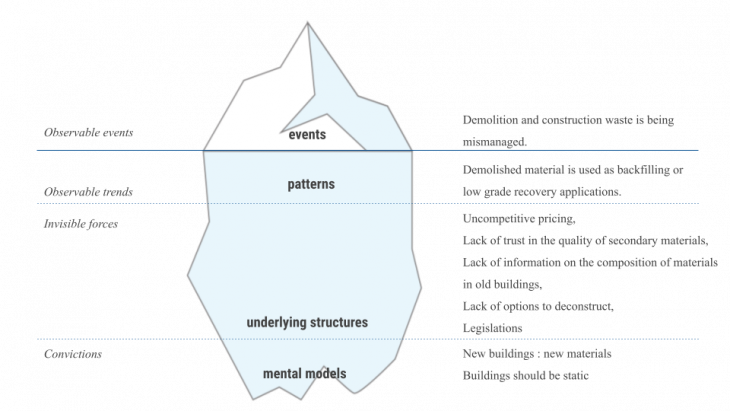MicroCity OS: Circular Systems within Architecture
System to Intervene
A design strategy that uses algorithmic design for the assembly and disassmbly of high density projects is proposed in order to control the 850 million tons of waste produced by the EU construction sector. The system this research will influence is the linear model with which construction and demolition waste (CDW) are being managed from within the building industry.

System Map
If we place Construction and demolition waste by the building industry at the center of the system, several affecting factors can be derived from it, specifically in the Design and Construction field. The main ones are the percentage of components that are reusable, percentage of material upcycled, percentage of materials downcycled and percentage of materials with passports or accurate life cycle assesments.
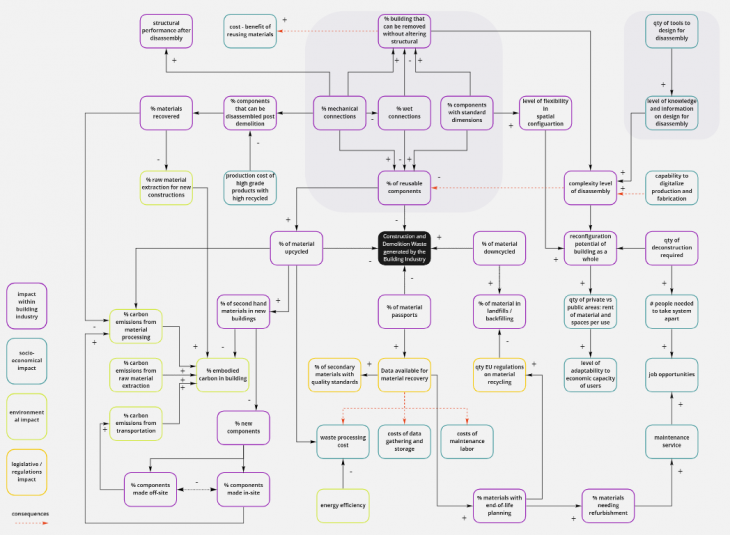
The project will mainly focus on mechanical connections and the design of components with standard dimensions, which will lead to an increased level of flexibility in spatial configuration and then to reconfiguration potential of the cluster building as a whole in a “short” term.
One unforeseen consequence is the structural ability of the cluster to withstand changes. If it fails it can lead to catastrophic failure. Another is the timeline of the disassembly because it would depend on the user, perhaps a limit should be set on the rental contract of the materials.
Iceberg Model
An iceberg model was developed to gain a deeper understaing of why CDW is being mismanaged.
The solution of decreasing waste can be placed in three layers:
1 // Observable trends, because circularity has begun to pick up traction in the field but it has not been completely developed.
2 // Invisible forces , by encoding material information in the components within the algorithm so there is transparency in the line of design, production, and consumption.
3 // And finally in Convictions, by creating a shorter timeline of material and spatial use, the building is treated as a material bank and each component has the possibility to be reused without losing value.
Stakeholder List
Stakeholder interaction plays a huge part in a Disassembly Strategy. A longlist was created to sort all the players in implementation, use, and management phases of a digital tool to design for deconstruction.
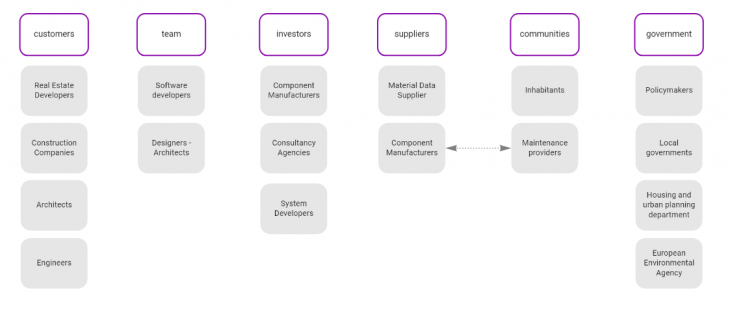
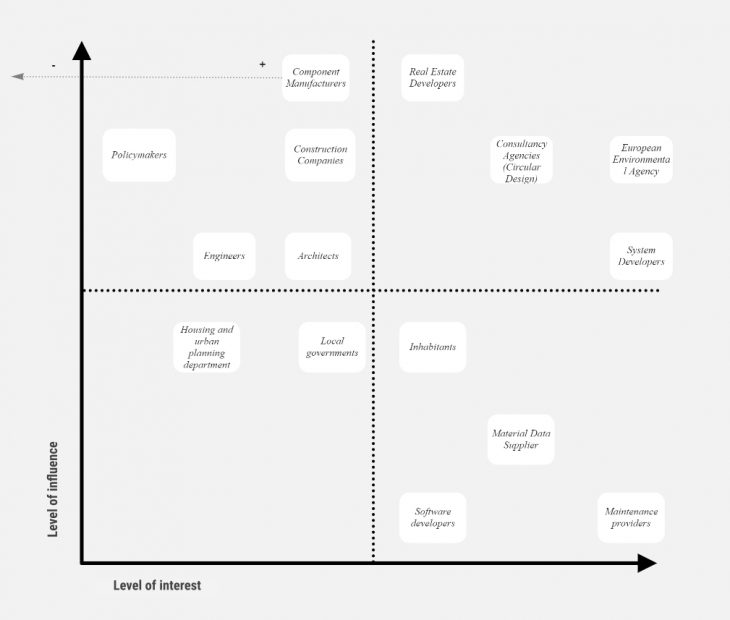
Additionally, the main stakeholders were selected and evaluated for their main obstacles to overcome in political, socio-economical, and physical hurdles.
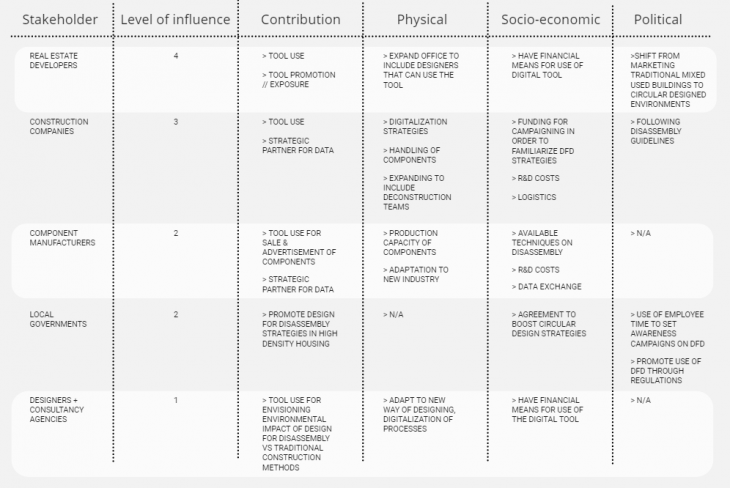
Project Timeline
A timeline was created with the objective to divide the project into implementation stages with the ultimate goal to have a working tool that allows for the creation of clusters using the strategy developed. The stages are divided into awareness, adoption, and digitalization.

Takeaways from seminar
1 // Stakeholders need to be educated on the importance of Design for Disassembly in order for it to gain momentum.
2 // Material passports can only be valid if there is a clear tracking of the information provided, for which a chain of value is needed.
3 // The entire building industry has to evolve, in the meaning of being digitalized, in order to apply circular design principles.
